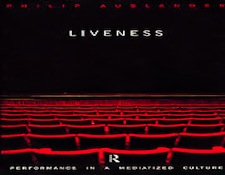It’s the time of year for saving money!
As I write this I’m sitting in front of my computer monitor, listening to a live feed from the Rockygrass Festival courtesy of the local community radio station, KGNU, via special-for-the-event Internet feed. Right now the amazing band, Della Mae, are on playing stage. And I’m having a flashback…
 The flashback is to 1985, in my loft space in Boston, listening to a live feed from the Boston Symphony Orchestra’s Friday afternoon concert from Symphony hall via WGBH-FM. What does an all-women bluegrass band and the Boston Symphony Orchestra have in common? Liveness.
The flashback is to 1985, in my loft space in Boston, listening to a live feed from the Boston Symphony Orchestra’s Friday afternoon concert from Symphony hall via WGBH-FM. What does an all-women bluegrass band and the Boston Symphony Orchestra have in common? Liveness.
Back in 1985 it was easy to understand how a recording verses a live microphone feed would sound different. After all, back in those days the sonic warts of both analog and digital recording were quite obvious, but now, with DSD 128X and PCM 192/24, how is it that when I listen to a live feed, even when digitized and compressed into a 128KBPS digital signal, I still hear a particular and unique lack of micro-compression that translates into a sense of reality that EVERY recording lacks?
There’s something deep down and central to the live feed that just sounds righter than the same moment recorded and played back.
 Compared to a recording, a live feed has greater transparency, even though it is going through most of the same bunch of fidelity-reducing processes, such as compressors and limiters (which are de-rigeur at a live shows to prevent blowing up gear). Analog fans often talk about their ability to “listen into the noise” in an analog recording. I hear a similar thing when I compare what I hear during a live-to-air broadcast compared to a recording, no matter how high-rez the recording may be. Recordings still fill up some minute, yet noticeable, part of the space with extremely low-level noise that obscures some transparency and low-level detail.
Compared to a recording, a live feed has greater transparency, even though it is going through most of the same bunch of fidelity-reducing processes, such as compressors and limiters (which are de-rigeur at a live shows to prevent blowing up gear). Analog fans often talk about their ability to “listen into the noise” in an analog recording. I hear a similar thing when I compare what I hear during a live-to-air broadcast compared to a recording, no matter how high-rez the recording may be. Recordings still fill up some minute, yet noticeable, part of the space with extremely low-level noise that obscures some transparency and low-level detail.
I encourage you to seek out live concert feeds and listen for yourself. See if you don’t hear that tiny spark of fidelity that somehow still eludes recorded media.





